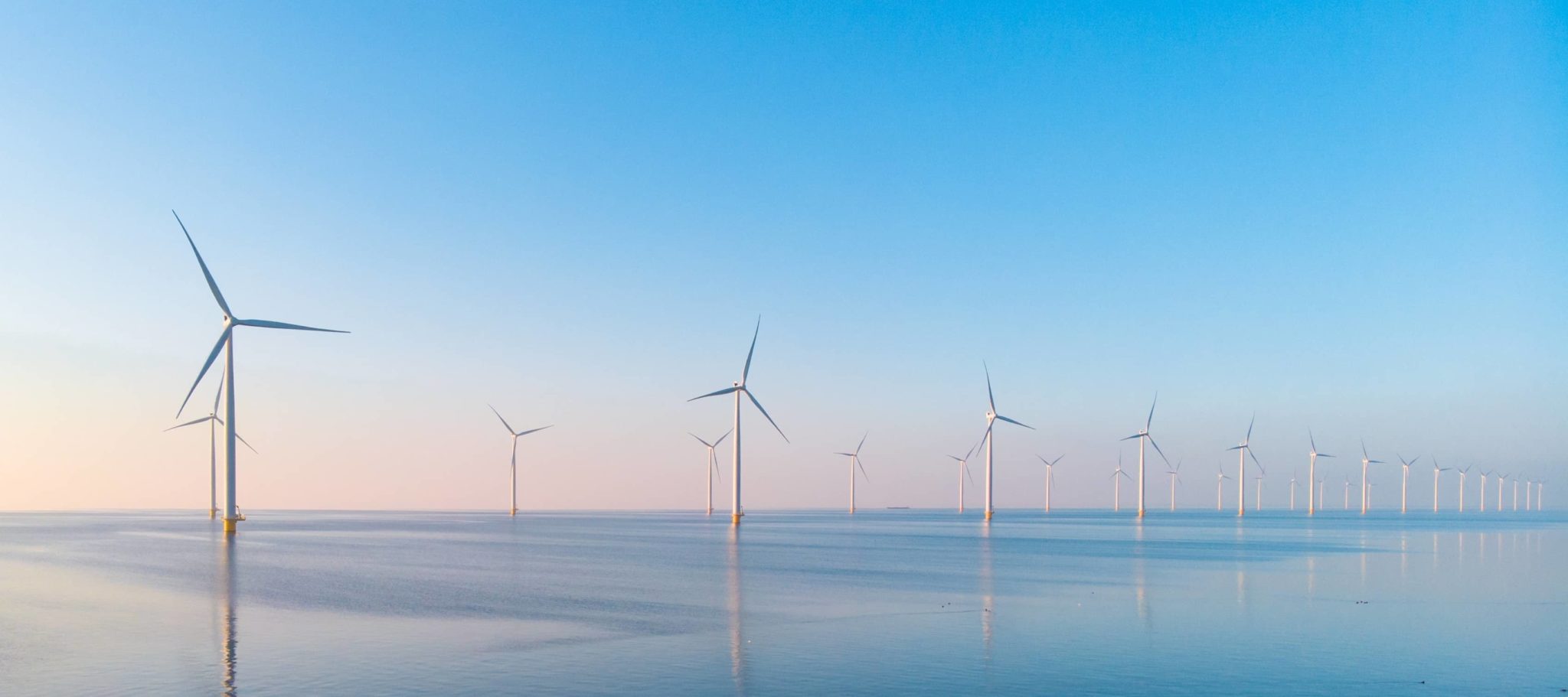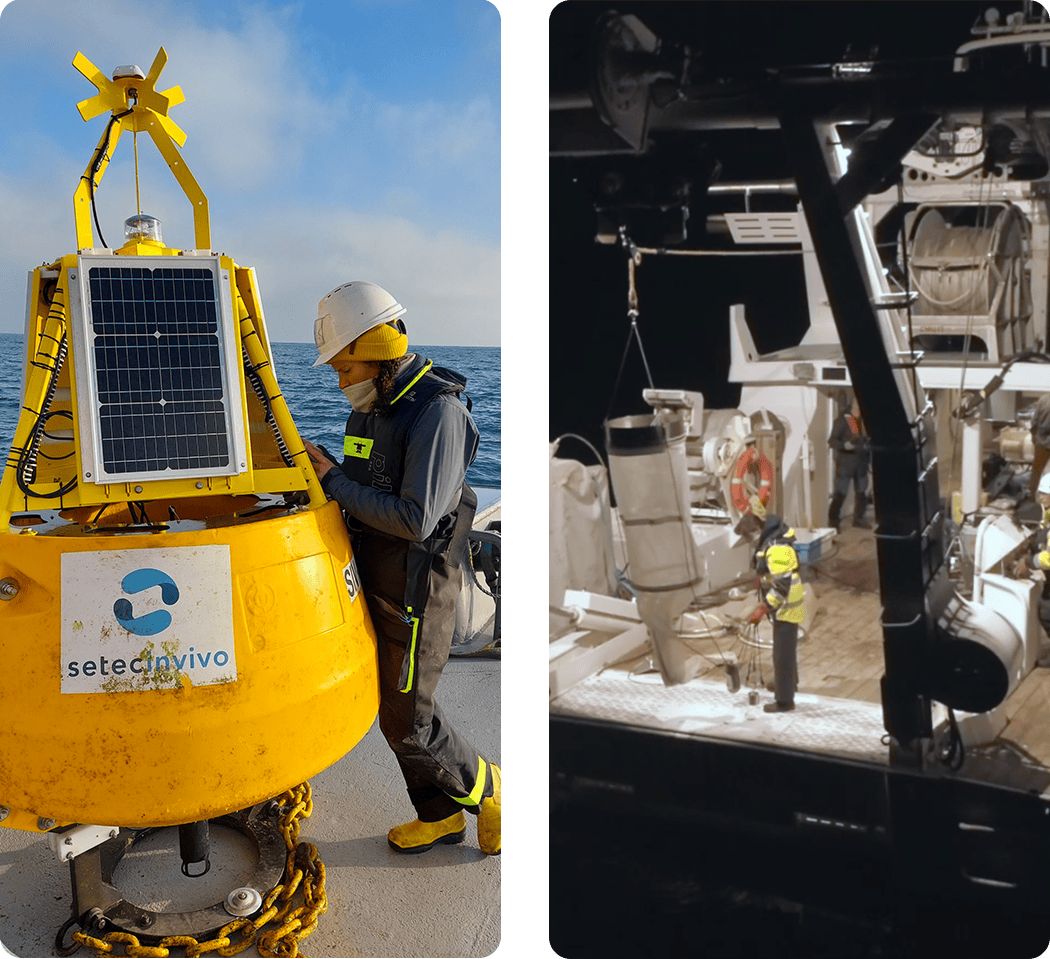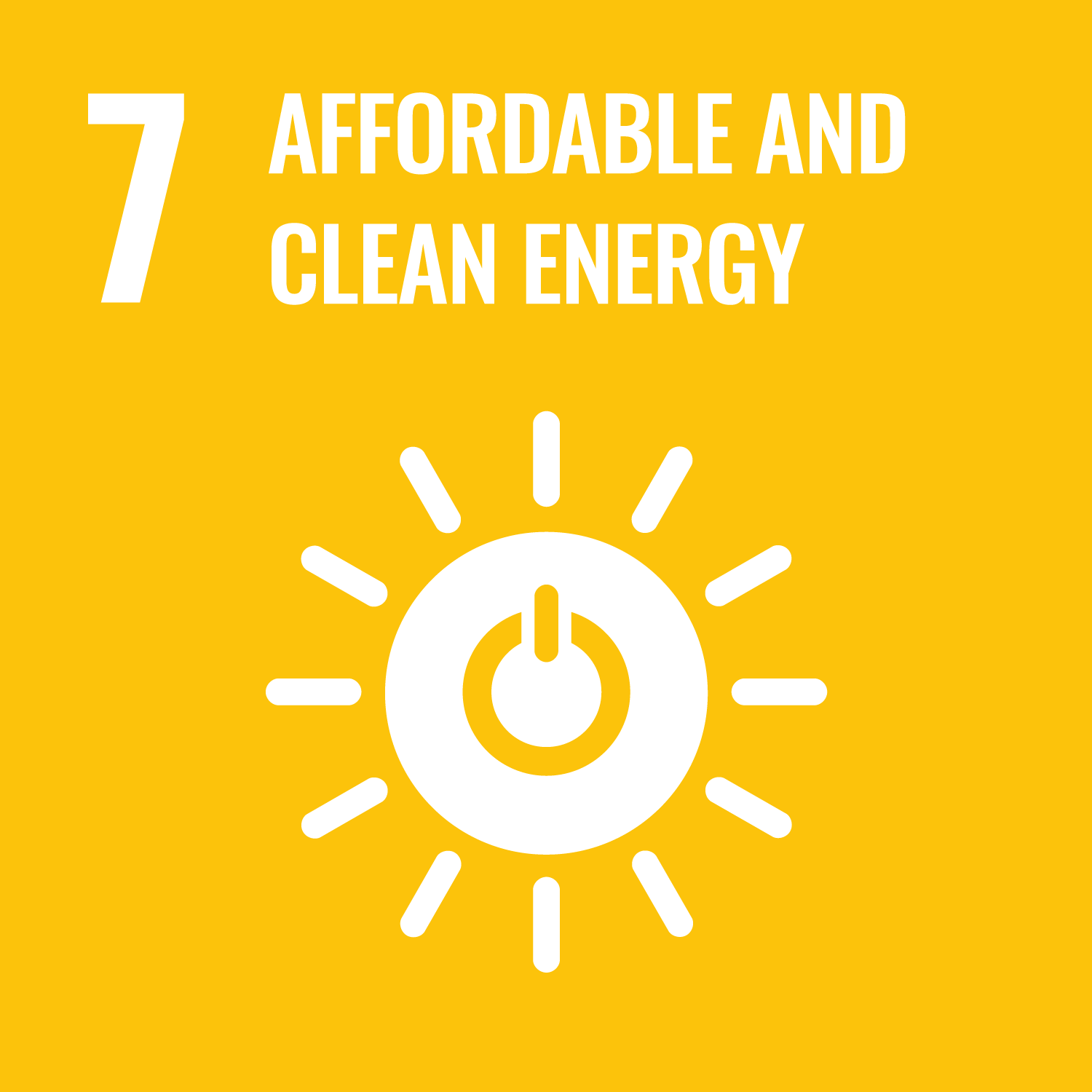Renewable Marine Energy
Environmental assessment of the project area for an offshore wind farm off the coast of Southern Brittany (AO5)
PROJECT CALENDAR
2021 – 2025

Since the French Essoc Act, the first stages of the authorisation procedure for the construction of an offshore wind farm and the connection of the wind farm to the electricity network are the responsibility of the government. This is particularly true when it comes to assessing the current state of the environment in the areas to be covered by the competitive bidding procedures for future projects. In this context, setec énergie environnement was commissioned to carry out the current status of all biological elements (marine habitats, benthic populations, plankton, fish, molluscs, crustaceans, marine megafauna, avifauna, chiropterans, etc.) in the AO5 zone in southern Brittany, as well as certain physical elements such as water quality, noise (underwater and overhead) and the landscape.
Setec énergie environnement mobilised an expert, multidisciplinary team to carry out an initial bibliographical survey and the necessary field studies for all the compartments studied over a period of 1 to 2 years:
- For water quality: measurements and water sampling (1/month), mussel caging and DGT sensors
- For underwater noise: passive listening with hydrophones and C-PODS (continuous)
- For airborne noise: passive listening (2/year)
- For marine habitats and benthic communities: grab samples (2/year), videos and photos by ROV (1/year)
- For plankton: sampling (1/month)
- For fish stocks: scientific fishing (1/season)
- For avifauna and marine megafauna: surveys by boat and by plane, with observers (1/month)
- For chiropterans: passive listening on land and at sea (continuously from April to October)
- Landscape: description and identification of issues
The protocols were established and implemented in consultation with scientific experts.


Setec énergie environnement mobilised an expert, multidisciplinary team to carry out an initial bibliographical survey and the necessary field studies for all the compartments studied over a period of 1 to 2 years:
- For water quality: measurements and water sampling (1/month), mussel caging and DGT sensors
- For underwater noise: passive listening with hydrophones and C-PODS (continuous)
- For airborne noise: passive listening (2/year)
- For marine habitats and benthic communities: grab samples (2/year), videos and photos by ROV (1/year)
- For plankton: sampling (1/month)
- For fish stocks: scientific fishing (1/season)
- For avifauna and marine megafauna: surveys by boat and by plane, with observers (1/month)
- For chiropterans: passive listening on land and at sea (continuously from April to October)
- Landscape: description and identification of issues
The protocols were established and implemented in consultation with scientific experts.





